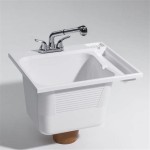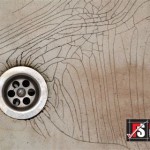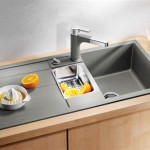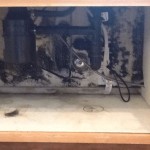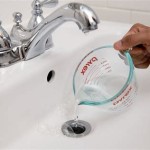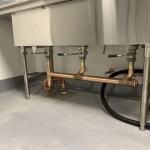```html
Fireclay Versus Cast Iron Sink: A Detailed Comparison
Sinks are a crucial element in both kitchens and bathrooms, serving a fundamental functional purpose while also contributing significantly to the overall aesthetic. When selecting a sink, homeowners are presented with a wide array of materials, each possessing distinct advantages and disadvantages. Two of the most popular choices are fireclay and cast iron. Both offer durability and a classic look, but they differ considerably in their manufacturing process, performance characteristics, and maintenance requirements. Understanding these distinctions is essential for making an informed decision that aligns with individual needs and preferences.
Manufacturing Processes: The Foundation of Their Differences
The primary divergence between fireclay and cast iron sinks lies in their construction. Fireclay sinks are crafted from a specific type of clay that is fired at exceptionally high temperatures, typically exceeding 2000 degrees Fahrenheit. This intense heat causes the clay particles to fuse together, resulting in a dense, non-porous, and exceptionally durable material. The process begins with the molding of the clay into the desired shape. Once shaped, the clay undergoes a drying process to remove excess moisture, preventing cracking during the firing stage. After drying, the sink is often coated with a porcelain enamel glaze before entering the kiln. The high-temperature firing vitrifies the clay and fuses the glaze, resulting in a robust and resistant surface.
Cast iron sinks, on the other hand, are manufactured by pouring molten iron into a mold. Once the iron cools and solidifies, the mold is removed, and the sink undergoes a process of cleaning and surface preparation. The most critical step involves applying a thick layer of enamel, typically porcelain enamel, to the cast iron core. This enamel coating provides the sink with its smooth, glossy finish and protects the iron from rust and corrosion. The sink is then fired in a kiln at a lower temperature compared to fireclay, fusing the enamel to the iron substrate. The thickness and quality of the enamel coating are paramount in determining the sink's long-term durability and resistance to chipping and staining.
This fundamental difference in manufacturing processes dictates many of the subsequent performance and aesthetic characteristics of each type of sink.
Durability and Resistance: Standing the Test of Time
Both fireclay and cast iron sinks are known for their durability, but their resistance to different types of wear and tear varies. Fireclay sinks, due to their dense, non-porous nature, are highly resistant to scratching, staining, and chipping. The high-firing temperature creates a material that is exceptionally hard, making it difficult to damage with everyday use. While they are durable, extreme impacts with heavy objects can still cause damage, but generally, they hold up well to the rigors of a busy kitchen.
Cast iron sinks, while also durable, are more susceptible to chipping. The enamel coating, though protective, is a layer applied over the iron core. If this coating is chipped, the exposed iron is vulnerable to rust and corrosion. The quality and thickness of the enamel play a crucial role in determining the chip resistance of a cast iron sink. Higher-quality cast iron sinks typically have thicker enamel layers, providing greater protection. However, even with a high-quality enamel coating, heavy impacts can still lead to chipping. Cast iron sinks are generally resistant to staining, but it's important to promptly clean up spills, especially acidic substances, to prevent potential discoloration of the enamel over time.
Therefore, while both offer longevity, fireclay generally boasts superior resistance to everyday wear and tear, especially concerning scratching and chipping, while the longevity of a cast iron sink is heavily reliant on the integrity of its enamel coating.
Aesthetics and Design Versatility: Shaping the Look of Your Space
Both fireclay and cast iron sinks offer a range of aesthetic possibilities, but they differ in their inherent characteristics. Fireclay sinks are often associated with a farmhouse or apron-front style, characterized by a large, deep basin and an exposed front. This style is popular for its rustic charm and functional design. However, fireclay sinks are also available in other styles, including undermount and drop-in models, offering greater versatility in design integration. The smooth, glossy surface of fireclay provides a clean and elegant look that complements various kitchen styles.
Cast iron sinks, similarly, offer a classic and timeless aesthetic. They are available in a wider range of colors compared to fireclay, allowing for greater customization to match specific design schemes. While farmhouse styles are available, cast iron sinks are more commonly found in traditional drop-in or undermount configurations. The enamel coating on cast iron provides a smooth, reflective surface that adds a touch of sophistication to any kitchen or bathroom. However, the color of a cast iron sink is susceptible to fading or yellowing over time, particularly with prolonged exposure to sunlight or harsh cleaning agents.
Furthermore, the production of fireclay sinks allows for more intricate detailing and shaping during the moulding process, sometimes resulting in visually distinct designs that are harder to achieve with cast iron production methods. The visual "weight" of each material also differs; cast iron sinks often appear more substantial due to their inherent material density.
Maintenance and Cleaning: Preserving the Beauty
Maintaining both fireclay and cast iron sinks is relatively straightforward, but there are specific considerations for each material. Fireclay sinks are generally easy to clean due to their non-porous surface. Regular cleaning with mild soap and water is typically sufficient to remove dirt and grime. Abrasive cleaners should be avoided as they can scratch the surface. For stubborn stains, a non-abrasive cleaning paste or baking soda can be used. It's important to rinse the sink thoroughly after cleaning to remove any residue. Because fireclay is so durable, it can withstand more rigorous cleaning if required, though harsh chemicals should still generally be avoided.
Cast iron sinks require slightly more diligent maintenance to prevent chipping and staining. Regular cleaning with mild soap and water is also recommended. Abrasive cleaners should be avoided as they can damage the enamel coating and lead to scratching. Stains should be addressed promptly to prevent discoloration. If a chip occurs in the enamel, it should be repaired as soon as possible to prevent rust and corrosion. Specialized enamel repair kits are available for this purpose. Avoid dropping heavy objects into the sink, as this can easily cause chipping. Cast iron sinks are somewhat more susceptible to water spots, requiring occasional drying to maintain their polished appearance.
Therefore, while both materials are relatively easy to clean, preventative measures are slightly more crucial with cast iron sinks to protect the enamel coating and avoid potential rust issues.
Weight and Installation Considerations: A Practical Perspective
Both fireclay and cast iron sinks are significantly heavier than sinks made from other materials like stainless steel or acrylic. This weight necessitates careful consideration during installation. Fireclay sinks, particularly large farmhouse styles, can be exceptionally heavy, requiring reinforced cabinetry to provide adequate support. The weight can also make installation more challenging, often requiring professional assistance.
Cast iron sinks are also heavy, though typically slightly lighter than comparable fireclay sinks. As with fireclay, reinforced cabinetry is often necessary to support the sink's weight. Proper installation is crucial to ensure the sink is securely mounted and to prevent any stress on the supporting structure. Accurate measurements are essential to ensure the sink fits properly into the countertop opening.
The weight considerations extend to shipping and handling. Both types of sinks require careful packaging and handling to prevent damage during transport. The increased weight also contributes to higher shipping costs. When planning for a sink replacement or new construction, it's essential to factor in the weight limitations of existing cabinetry and to consider the logistical challenges associated with handling and installing a heavy sink.
Cost Comparison: An Investment in Quality
The cost of fireclay and cast iron sinks can vary depending on the size, style, brand, and quality of materials used. Generally, fireclay sinks tend to be slightly more expensive than cast iron sinks. This is primarily due to the more complex manufacturing process and the higher firing temperatures required to produce fireclay. The inherent durability and resistance to scratching and chipping also contribute to the higher price point.
Cast iron sinks, while generally more affordable, can still represent a significant investment. The cost will vary depending on the quality of the cast iron, the thickness and quality of the enamel coating, and the design features of the sink. High-end cast iron sinks with intricate detailing or custom colors can be comparable in price to mid-range fireclay sinks.
Long-term cost considerations should also be taken into account. While fireclay sinks may have a higher upfront cost, their superior durability and resistance to damage can potentially lead to lower replacement costs over time. Cast iron sinks, if properly maintained, can also last for many years, but the potential for chipping and rust necessitates more careful maintenance and potential repair costs.
```
Fireclay Vs Cast Iron Sink Pros Cons And How To Choose Van Dyke S Rers

Fireclay Vs Cast Iron Sink Pros Cons And How To Choose Van Dyke S Rers

Fireclay Vs Cast Iron Sink Pros Cons And How To Choose Van Dyke S Rers

Fireclay Vs Cast Iron Sinks Which Is Better

Fireclay Vs Cast Iron Sink Heat To Head Comparison

Fireclay Vs Cast Iron Sink Pros Cons And How To Choose Van Dyke S Rers

Fireclay Vs Cast Iron A Best In Farmhouse Contest Ruvati Usa

Fireclay Vs Cast Iron Sink Pros Cons And Costs Angi

Fireclay Vs Cast Iron Sink Which Is Best For You Enthralling Gumption

Fireclay Vs Cast Iron A Best In Farmhouse Contest Ruvati Usa

